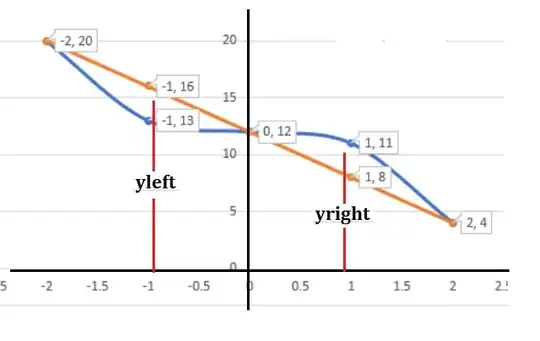The curves look like this. The solution for the volume used a circular disk for the x axis of revolution. I got the total volume from doubling the volume by rotating the solid formed from $x=0$ to $x=2$. Trying to apply the same concept from the boundary $x=-2$ to $x=0$, I get a different answer.
Solution: Boundary: $x=0$ to $x=2$
$$\frac V2=\pi\int_{0}^2[(12-x^3)^2-(12-4x)^2] dx$$
V=~449
Boundary: $x=-2$ to $x=0$
$$\frac V2=\pi\int_{-2}^0[(12-4x)^2-(12-x^3)^2] dx$$
$V=~756$
What am I missing?
